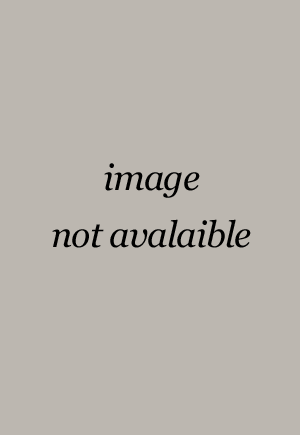(To see other currencies, click on price)
MORE ABOUT THIS BOOK
Main description:
Despite global advancements in pediatric medicine, technologies which have become standard-of-care in high-resource settings are unavailable in low-and middle-income countries due to cost, availability, or challenges maintaining equipment. This book compiles evidence-based and expert clinical procedural adaptations in an approachable, case-based, step-by-step guide, aimed to provide educational support for healthcare providers practicing in resource-limited settings. This responds to both the high demand for this content and the importance of gathering experts across continents and pediatric disciplines.
Each chapter provides both a theoretical framework and practical discussion of high-yield procedural adaptations. Leading international researchers and seasoned clinicians with expertise using these adaptations were selected by the editors as authors. Chapters include an example case with adaptation use and detailed instructions including supplies, indications, risks, and benefits. Content is grounded in current best practice recommendations and evidence-based research.
Highlighted by the COVID-19 pandemic, a mature understanding of pathophysiology and device design/safety is required when providing care in low-resource settings or in crisis times. In-person instruction is not always feasible. Written and virtual platforms remain critical in disseminating high-yield, practical content. This book is not a substitute for appropriate procedural training, though is easily modified to meet the educational needs of diverse learner groups. It is a valuable resource for appropriately trained practitioners practicing in accordance with local guidelines.
Knowledge and fluency with pediatric procedural adaptations is critical in efforts to reduce global inequities and pediatric morbidity/mortality in low-resource settings.
Contents:
1) Introduction to important concepts:
(1) Include concepts of "do no harm" - not experimenting with these procedures. We will discuss benefits vs risk of each procedure, with consideration for cost, setting, patients most likely to benefit.
(2) We will highlight basic concepts behind device modifications. For example, modifications should be simple and easily reproduced with accuracy. They should not require a constant flow of supplies from high income countries
2) Clinical Cases
(1) Share up to date research and available evidence on each topic, procedure and modification.
(2) Share resources (visuals diagrams, video links, websites) for additional learning, practice, and/or questions.
(3) Case-based chapters with proposed collaborators
(a) Modified intra-osseous (IO) needles with stabilizers
(i) Dr. I. Ojo (University of Minnesota, Minneapolis, Minnesota)
(ii) Dr. M. Odongkara (Gulu, Uganda)
(b) Modified pediatric resuscitation
(i) Dr. M. Ralston (California)
(ii) Dr. N. Musa (Seattle Children's Hospital Seattle, WA)
(iii) Dr. H. Doss (Vermont)
(c) Phototherapy (locally made devices and adaptations to both commercial and locally made devices to increase efficacy and safety)
(i) Dr. S. Oguche and other members of the Stop Kernicterus in Northern Nigeria team (Jos, Kano, Zaria Nigeria)
(d) Umbilical venous catheter placement
(i) Dr. J. Winter (University of Minnesota, Minneapolis, MN)
(ii) Dr. Y. Vaucher (University of California, San Diego, CA)
(e) Exchange transfusions for severe hyperbilirubinemia
(i) Dr. Z. Shah (Nationwide Children's Hospital/OSU)
(ii) Dr. S. Oguche and other members of the Stop Kernicterus in Northern Nigeria team (Jos, Kano, Zaria Nigeria)
(f) Modified spacer for a metered-dose inhaler
(i) Dr. A. Wu (University of Minnesota, Minneapolis, MN)
(g) Modified wound vacuum
(i) Dr. S. Gidado (Bingham University Teaching Hospital, Jos, Nigeria)
(ii) Dr. A. Adesina (Bowen University Teaching Hospital, Ogbomoso,Nigeria)
(iii) Dr. M. Mwachiro (Kenya)
(h) Modified pleurovac
(i) Dr. Z. Shah (Nationwide Children's Hospital/OSU)
(i) Dr. R. Johannsen (Hennepin County Medical Center, Minneapolis, Minnesota)
(j) Burn care adaptations
(i) Dr. A. Kiragu (Hennepin Healthcare, Minnesota)
(ii) Dr. S. Gidado (Bingham University Teaching Hospital, Jos, Nigeria)
(iii) Dr. A. Adesina (Bowen University Teaching Hospital, Ogbomoso,Nigeria)
(iv) Dr. M. Mwachiro(Kenya)
(k) Traction and devices for orthopedic care/prosthetics
(i) Dr. S. Gidado (Bingham University Teaching Hospital, Jos, Nigeria)
(ii) Dr. A. Adesina (Bowen University Teaching Hospital, Ogbomoso,Nigeria)
(iii) Dr. M. Mwachiro (Kenya)
(l) Neonatal resuscitation adaptations
(i) Dr. A. Rule (Cincinnati Children's Hospital, Cincinnati, OH)
(ii) Dr. L. Day (London School of Tropical Medicine, London, UK)
(iii) Dr. M. Nakeeto (Kampala, Uganda)
(iv) Dr. C. Ezeaka (Lagos University Teaching Hospital, Lagos, Nigeria)
(m) Intravenous fluid administration without pumps
(i) Dr. I. Ojo (University of Minnesota, Minneapolis, MN)
(ii) Dr. D. Gbadero (Bowen University Teaching Hospital, Ogbomoso,Nigeria)
(n) Lumbar puncture
(i) Dr. D. Gbadero (Bowen University Teaching Hospital, Ogbomoso,Nigeria)
(ii) Dr. C. Howard (University of Minnesota, Minneapolis, MN)
(o) Ultrasound use in placed of high cost diagnostics
(i) Dr. S. Dunlop (Hennepin County Medical Center, Minneapolis, MN)
(ii) Dr. R. Johannsen (Hennepin County Medical Center, Minneapolis, MN)
(iii) Dr. N. Herr (New York)
(p) Bubble CPAP and other airway adjunctive therapies
(i) Dr. A. Wu (University of Minnesota, Minneapolis, MN)
(ii) Dr. M. Odongkara (Gulu, Uganda)
(iii) Dr. Z. Shah (Nationwide Children's Hospital/OSU)
(q) Breastfeeding support devices (everters, creamatocrit)
(i) Dr. Y. Vaucher. (University of California, San Diego, CA)
(ii) Dr. M. Nakeeto (Kampala, Uganda)
(r) Kangaroo mother care
(i) Dr. J. Winter (University of Minnesota, Minneapolis, MN)
(ii) Dr. M. Odongkara (Gulu, Uganda)
(iii) Dr. M. Nakeeto (Kampala, Uganda)
(s) Low-fidelity simulations
(i) Dr. M. Pitt (University of Minnesota, Minneapolis, MN)
(ii) Dr. L. Day (London, UK)
(iii) Dr. R. Bensen
(iv) Dr. M. Ralston (Washington)
(v) Dr. R. Moskalewicz
(t) Basics of NICU/PICU care in Resource Limited Settings
(i) Dr. S. Hagen (Madsen, WI)
(ii) Dr. C. Philip (Texas)
(iii) Dr. M. Odongkara (Gulu, Uganda)
(iv) Dr. M. Nakeeto (Kampala, Uganda)
(v) Ms. C. Johannsen (Minneapolis, MN)
(u) Oral rehydration
(i) Dr. D. Gbadero (Bowen University Teaching Hospital, Ogbomoso,Nigeria)
(ii) Dr. C. Howard (University of Minnesota, Minneapolis, MN)
(v) Malnutrition management
(i) Dr. D. Gbadero (Bowen University Teaching Hospital, Ogbomoso,Nigeria)
(ii) Dr. C. Howard (University of Minnesota, Minneapolis, MN)
3) Practice and implementation of procedural adapations
(1) Procedures workshop format
(2) Basic simulation scenario concepts
PRODUCT DETAILS
Publisher: Springer (Springer Nature Switzerland AG)
Publication date: October, 2022
Pages: 290
Weight: 632g
Availability: Available
Subcategories: General Practice, Paediatrics and Neonatal

